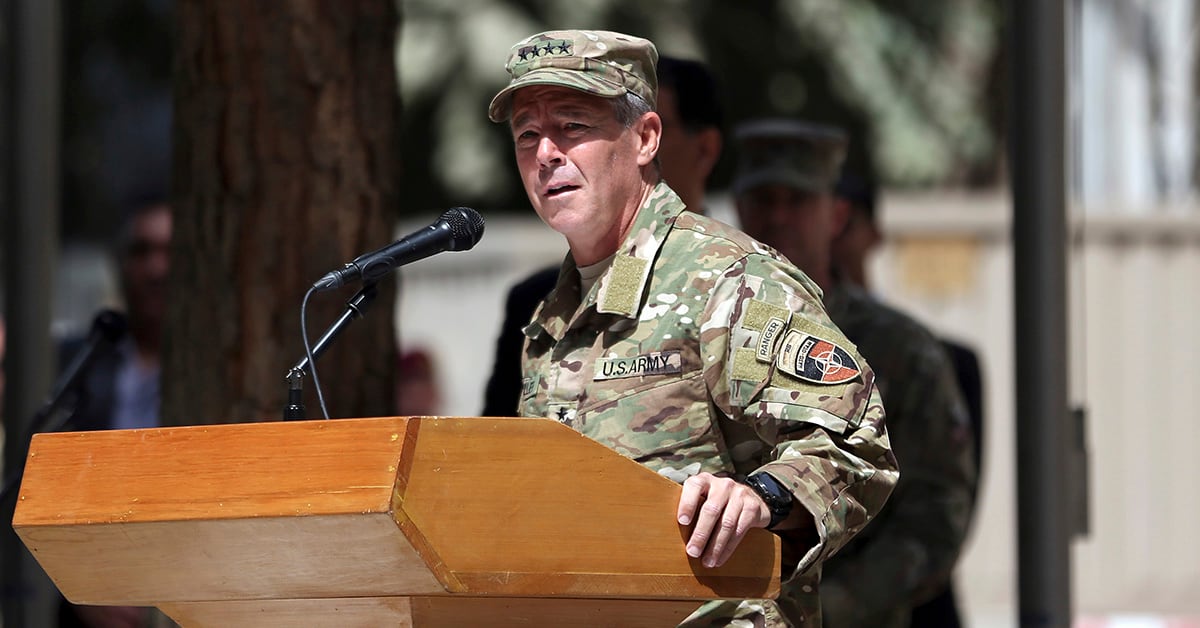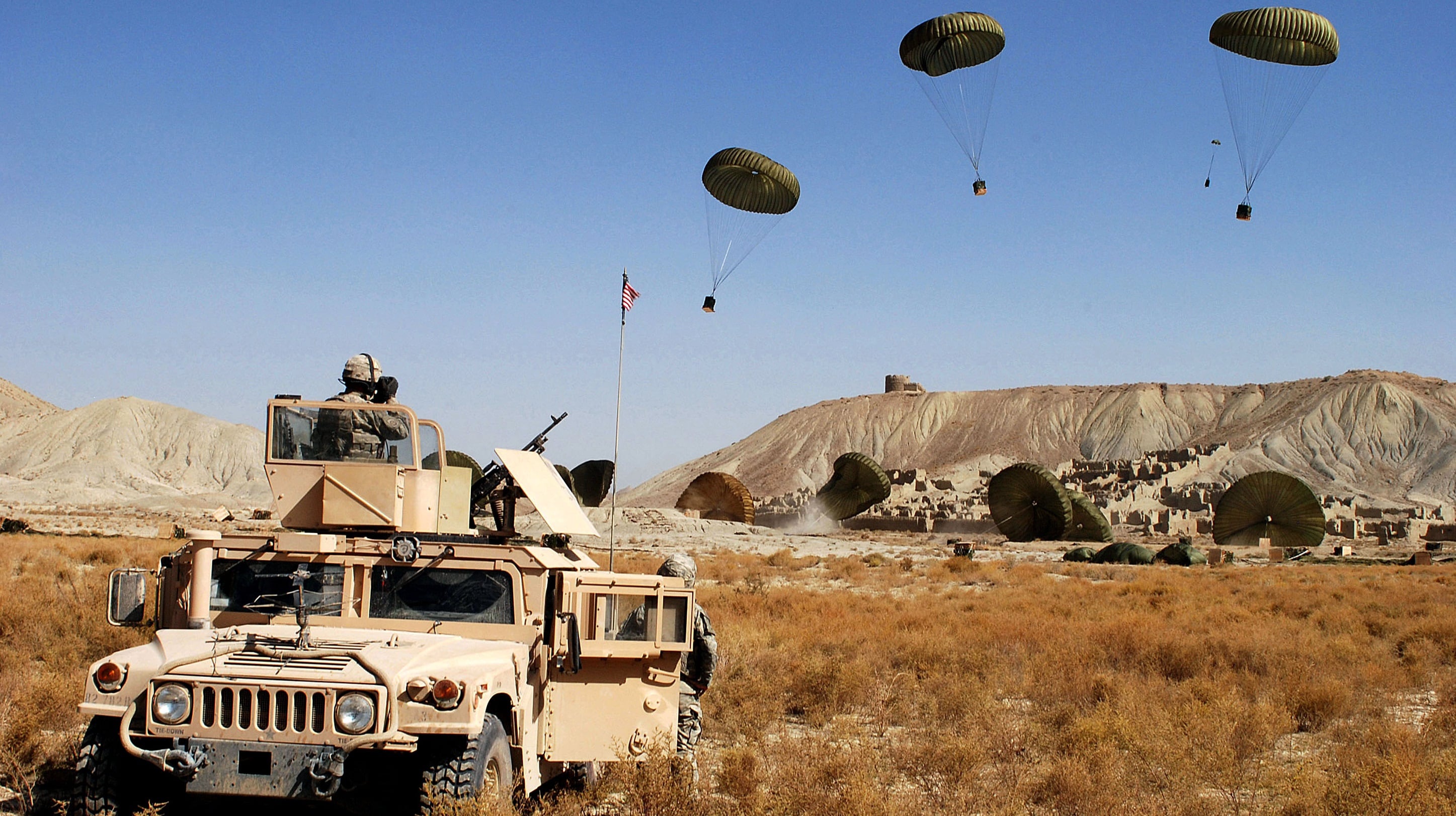Despite a drawdown of troops, the U.S.-led coalition to defeat ISIS in Iraq and Syria dropped more tons of supplies in 2019 than during the large scale operations to liberate Mosul, Iraq and Raqqa, Syria, from the Islamic State, according U.S. Air Forces Central Command.
The command did not respond to a question posed by Military Times regarding why the U.S. was dropping the immense quantity of food and equipment to forces on the ground, despite America’s withdrawal from the region. But the increase in airdrops could be directly related to the drawdown of troops in the region as ground logistics efforts become more difficult, a former veteran of the Air Force’s Air Mobility Command told Military Times. Air Mobility Command is tasked with providing airlift, air refueling and airdropping supplies and goods.
“We’re dropping supplies to folks out there because we don’t have the logistics in place like when our numbers were up in country,” the former AMC veteran told Military Times on condition of anonymity because he was not authorized to speak on the record. “Back when things were hot and heavy and we had a much larger presence in country we could put stuff on convoy and shoot it out across the region.”
2019 thus far has seen the second highest amount of pounds of cargo dropped in support of Operation Inherent Resolve since the U.S. launched operations to combat ISIS militants rampaging the region in 2014.
Air power summaries provided by AFCENT detail that the U.S.-led coalition dropped 452 tons of supplies — the only year during OIR that the U.S. air dropped more supplies was 2014. That year coalition aircraft parachuted nearly 700 tons of cargo.
The 2019 totals are roughly equivalent to airdropping 65 Joint Light Tactical Vehicles — the U.S. military’s replacement to the aging Humvee. One JLTV weighs roughly 7 tons.
RELATED

During the bloody street-to-street battle to wrestle Mosul and Raqqa from ISIS’ grip in 2017, the coalition airdropped 320 tons of supplies.
In Afghanistan — where the U.S. just revealed it had cut nearly 2,000 troops from U.S. force in the country over the past year — American aircraft in 2019 have dropped 122 tons of supplies.
That number is below last year’s total of 334 tons of airdropped supplies, but is still a dramatic increase from 2015 and 2016 levels, when U.S. aircraft didn’t airdrop any cargo in Afghanistan.
There are roughly 13,000 U.S. troops still in Afghanistan.
But fewer troops on the ground also means less security for ground logistics convoys ferrying supplies to remote outposts. “Airdrop does run a lot safer than large resupply convoys. Convoys are an easy target,” the AMC veteran said.
Especially in a dangerous location like Syria, he said.
In 2014, as ISIS toppled major cities across Iraq, the U.S. scrambled to send troops to the region to fill the power vacuum created when U.S. forces withdrew from Iraq in 2011.
RELATED

With a tiny presence in Iraq, America airdropped nearly 700 tons of goods.
The U.S. is still in the process of withdrawing roughly 1,000 U.S. troops from northern Syria following the Turkish military operation to combat U.S.-backed Syrian Democratic Forces. Turkey has long complained the Kurds who lead those forces are part of a terrorist organization.
President Donald Trump’s decision to pull American forces from Syria has been criticized heavily by lawmakers and national security experts who worry America’s exit will breathe new life into ISIS.
Trump said yesterday during a press conference that he planned to keep a small number of troops in Syria to protect terrorists from taking control of oil wells there. A small garrison near the Syria-Iraq border will also continue to house an American commando force tasked with training anti-ISIS fighters.
Shawn Snow is the senior reporter for Marine Corps Times and a Marine Corps veteran.




